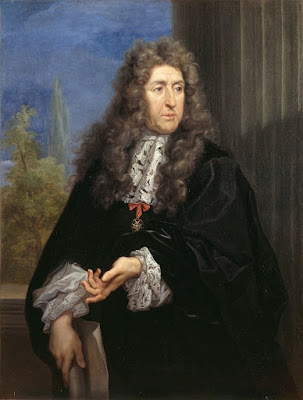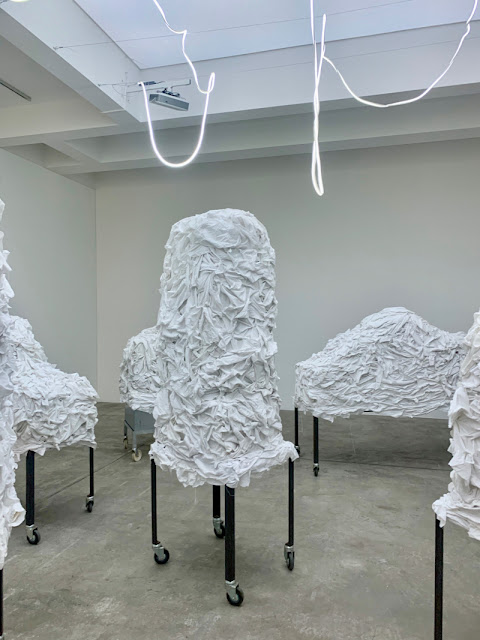On Friday 19th March an email arrived from la Louve, the cooperative supermarket of which I am a member. In the afternoon of the same day I walked along to Rue des Poissonniers to do an hour and half on one of the cash desks until, at a little before 6 o’clock, the curfew hour, I shouldered my backpack and started for home. The email was to tell us that from Saturday morning, for the next 4 weeks the supermarket would once again rely in part on ‘la coopération spontanée’, which is to say people lending a hand when they do their shopping: ‘Replenish the shelves with products you see waiting to be transferred from trolleys, fold the cardboard boxes for recycling, removing the sticky tape as you do, clean the handles of baskets and trolleys with the gel provided….’ Such small contributions to the collective effort help to keep the supermarket in business.
As you may know, the experience of shopping as a coopérateur/trice is very different from doing your bog-standard supermarket shop. For instance, although I am not yet confident on the checkout desk I don’t need to worry. If I hit a problem it is perfectly possible that the customer will come round to my side of the desk and show me how to sort things out. I think all shopping should be like that but in the covid era that sort of contact is more precious than ever.
I have been out and about as usual since my last bulletin, once to the south of the city as far as the 13th arrondissement, twice to the Tuilleries gardens and other times, to the Marais. The 13th arrondissement of Paris is, along with Belleville, where most Chinese, Vietnamese and Laotians live: a quartier of high-rise buildings and huge Chinese supermarkets, busy even in the lockdown. My route from home took me to the gare de Lyon then, then on the driverless line 14 metro to the terminal at les Olympiades. I was not there to shop though but to draw hands which
I did with other students, in a distanced way, on the 9th floor of a modern building looking out on flat roofs and the front of the Tang Frères supermarket.
One of the trips to the Tuilleries was also about drawing hands.
The other was to admire, from behind the temporary wire fencing, the 92 elms which the Paris parks department has planted down the main avenue leading from the Concorde towards the Louvre. The elm was one of the commonest trees in Paris parks until Dutch elm disease (la graphiose) destroyed most of them. The 92 new trees are a new disease-resistant variant ulmus minor Vada ‘Wanoux’. Their planting will narrow the avenue and make it shadier by pushing ‘le grand couvert’ created by the chestnut trees, out into the dusty open space of the avenue.
This is all part of the plan to recreate the gardens as André Le Nôtre, landscape gardener to Louis XIV, originally envisaged them.
If hot chocolate is your thing, you can nip across the road to Angélina’s, one of the cafes that is in every tourist guide to Paris - only open for takeaways at present of course. Carry your gobelet of extremely rich hot chocolate back over the road and drink it by the statues and the budding chestnuts.
My trips into the Marais were mostly to visit private galleries. Unlike the public ones they remain open, because they are commercial spaces as well as cultural ones. (this is just one example of the inconsistencies and stupidities of some of the virus rules). Christian Boltanski should have had his exhibition, Après, at the Pompidou but that being shut, it transferred to one of the galleries run by Marion Goodman on the rue du Temple. It has now closed but until mid-March offered a timely reminder of what we are living through. He says the following:
“A very horrible but interesting thing has occurred since covid is here, which is that death is no longer hidden …because of this disease we are talking about death as something that is around us and that is present.’
The ground floor of that exhibition contained a number of randomly placed hospital trolleys, each piled high with bundles of white linen.
On the walls transient images of faces flickered and faded – too fast almost to register consciously.
In the basement huge screens projected images of nature and, as on the ground floor, other images of people rose briefly to the surface for the viewer, only to fade again.
Boltanski was interviewed on Laure Adler’s’ Heure Bleue not so long ago (every Monday - Thursday, 8 pm France Inter). The pair of them conducted the whole interview in the dark, at his request. He is definitely the man for the moment we are living through.






